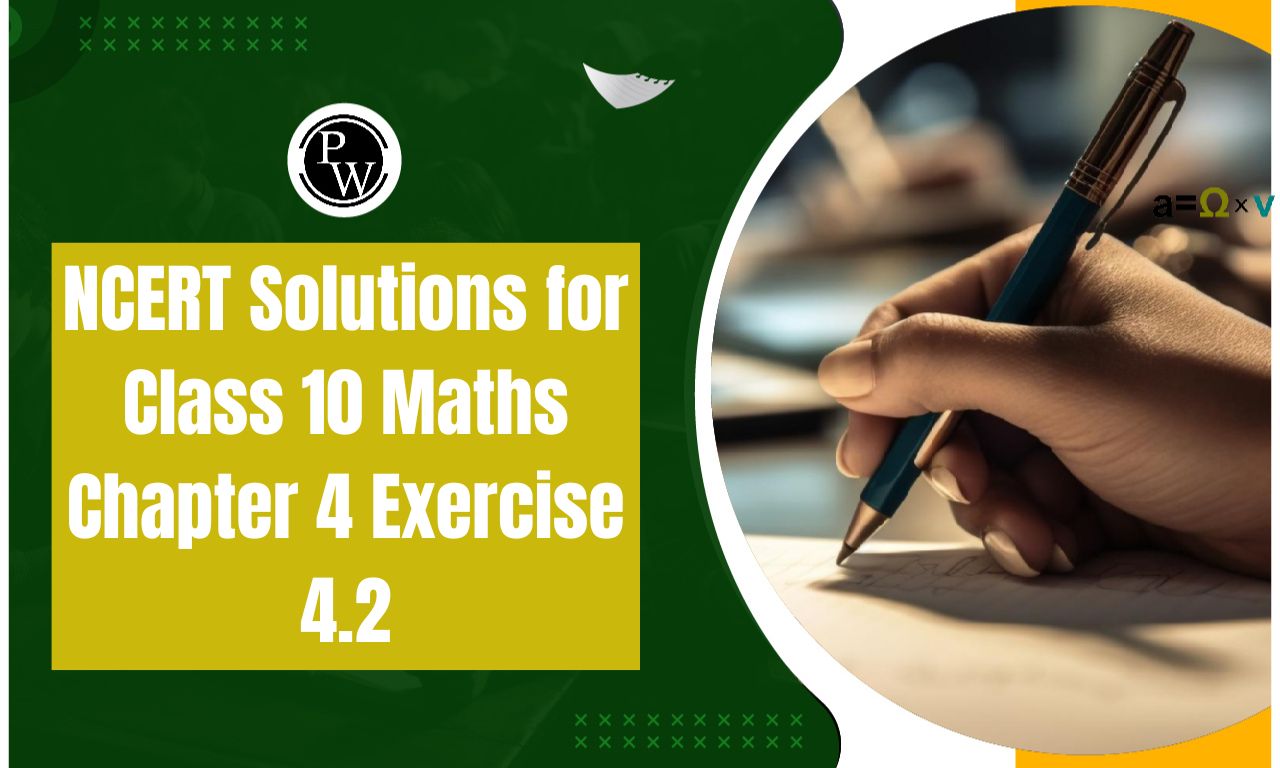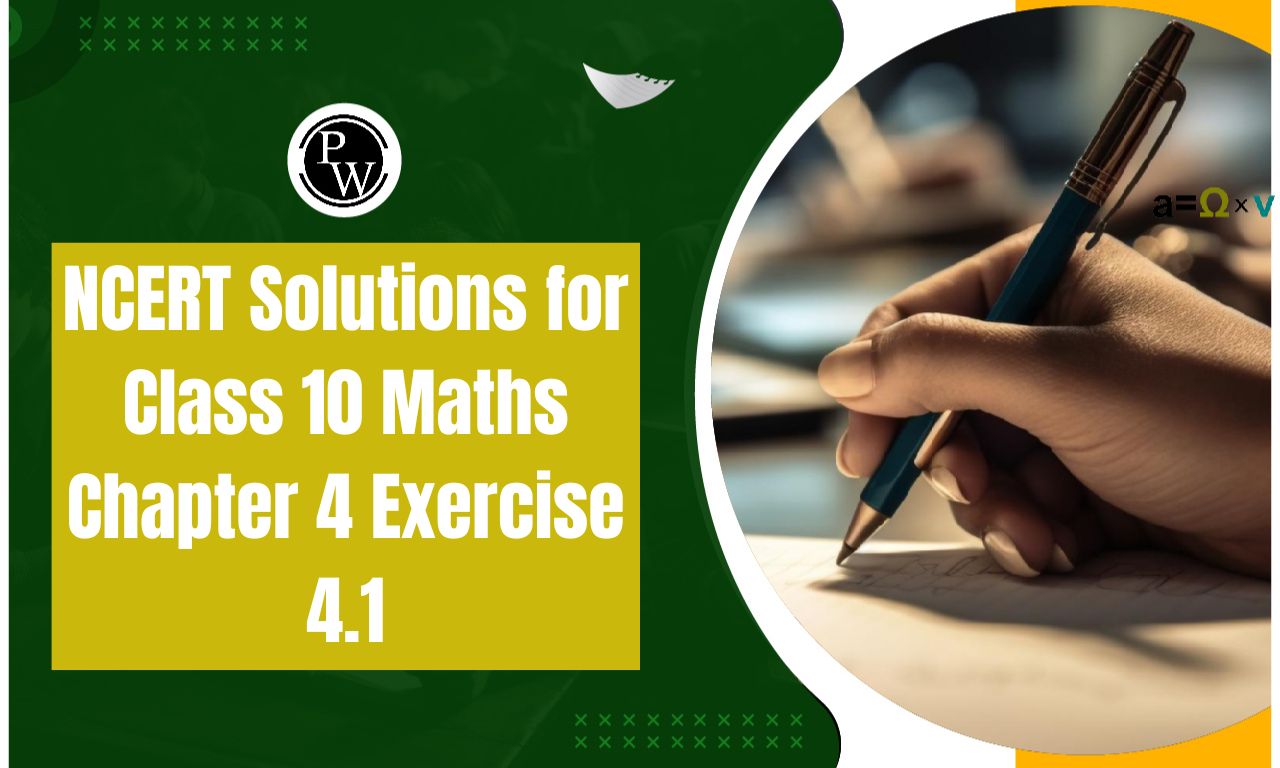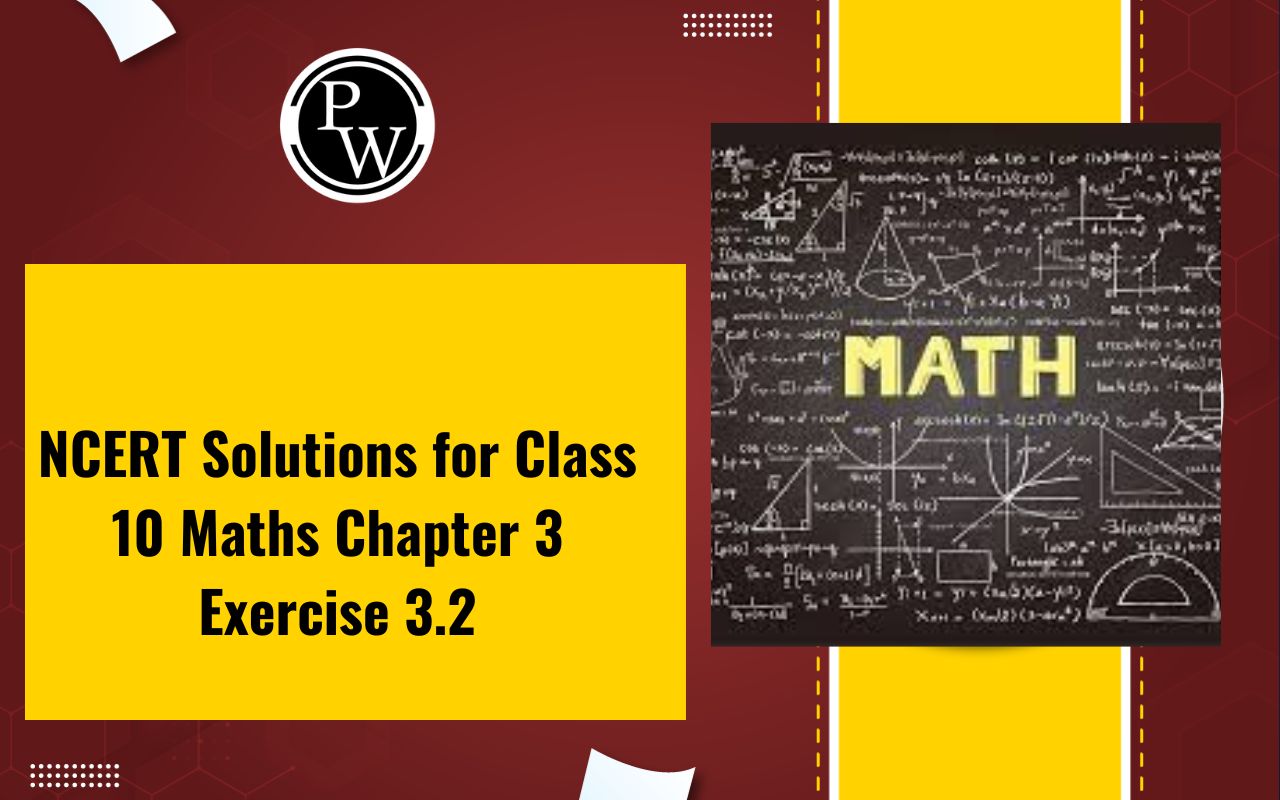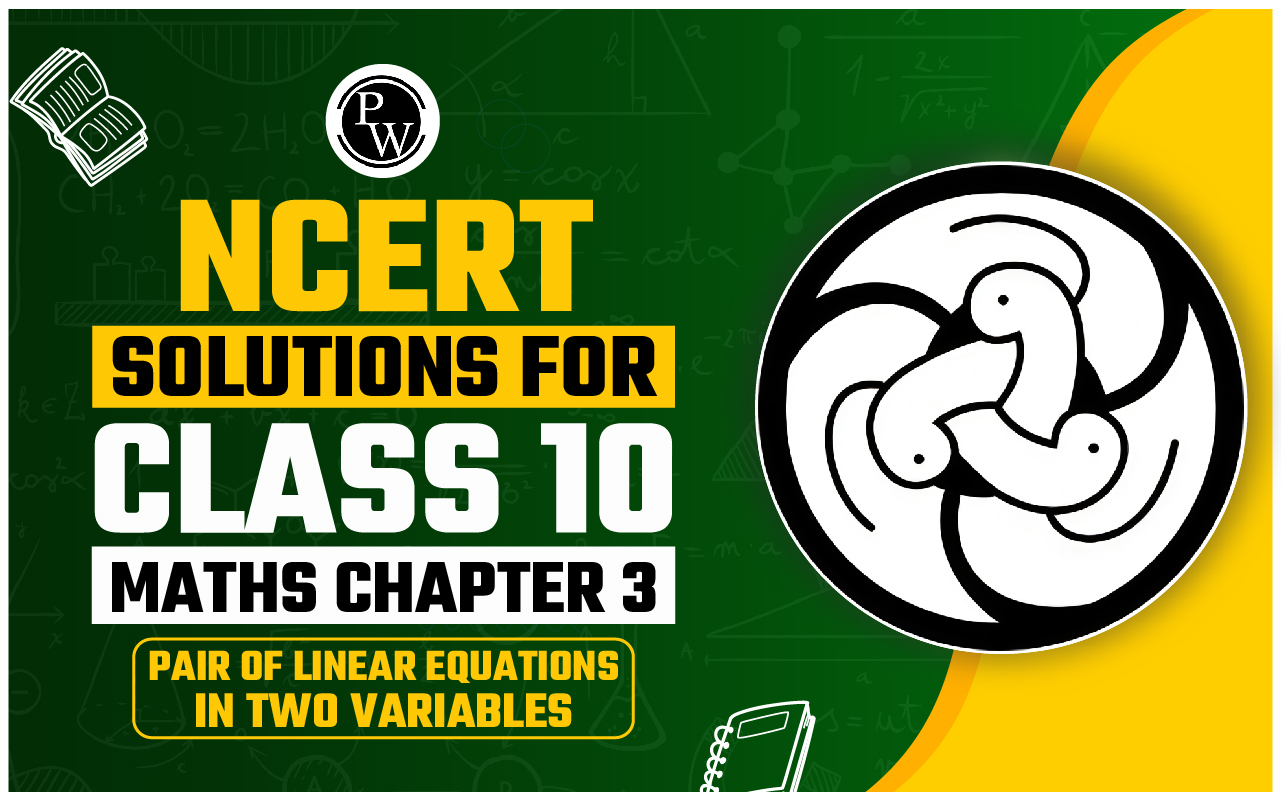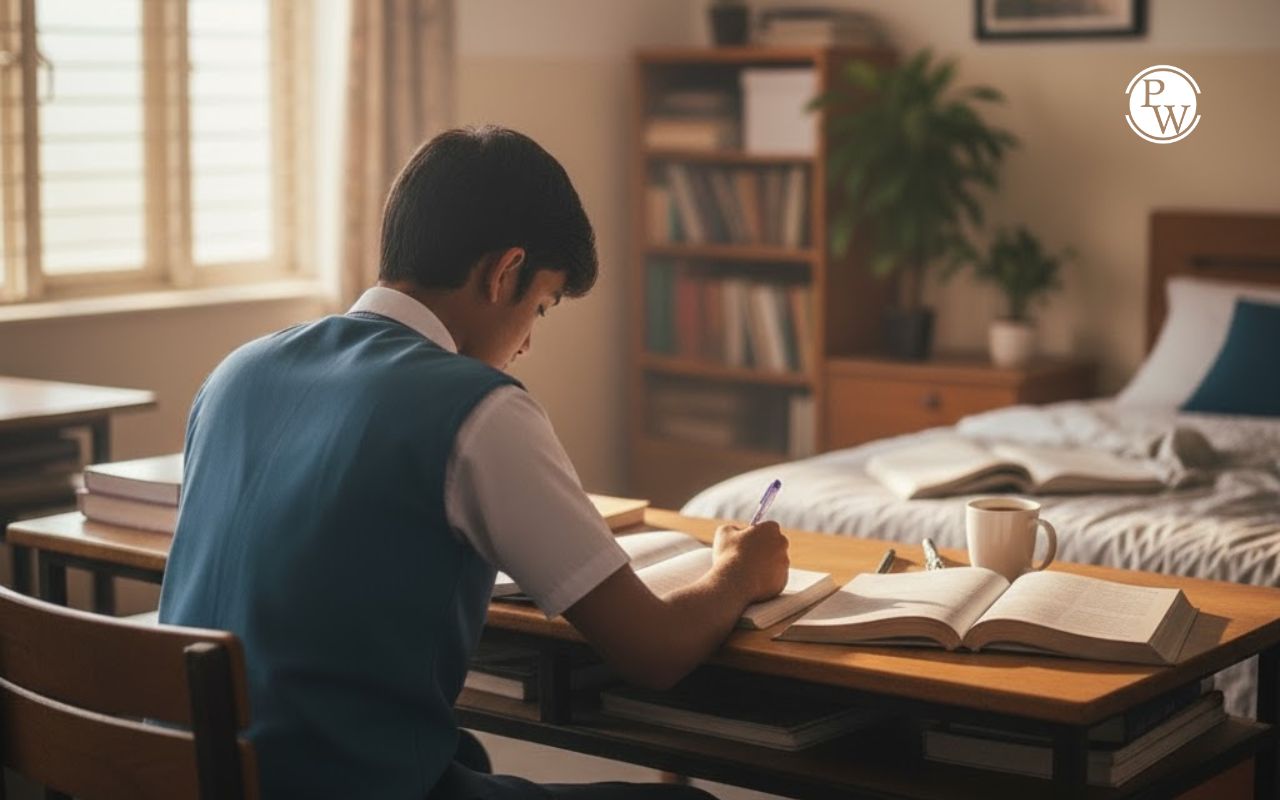
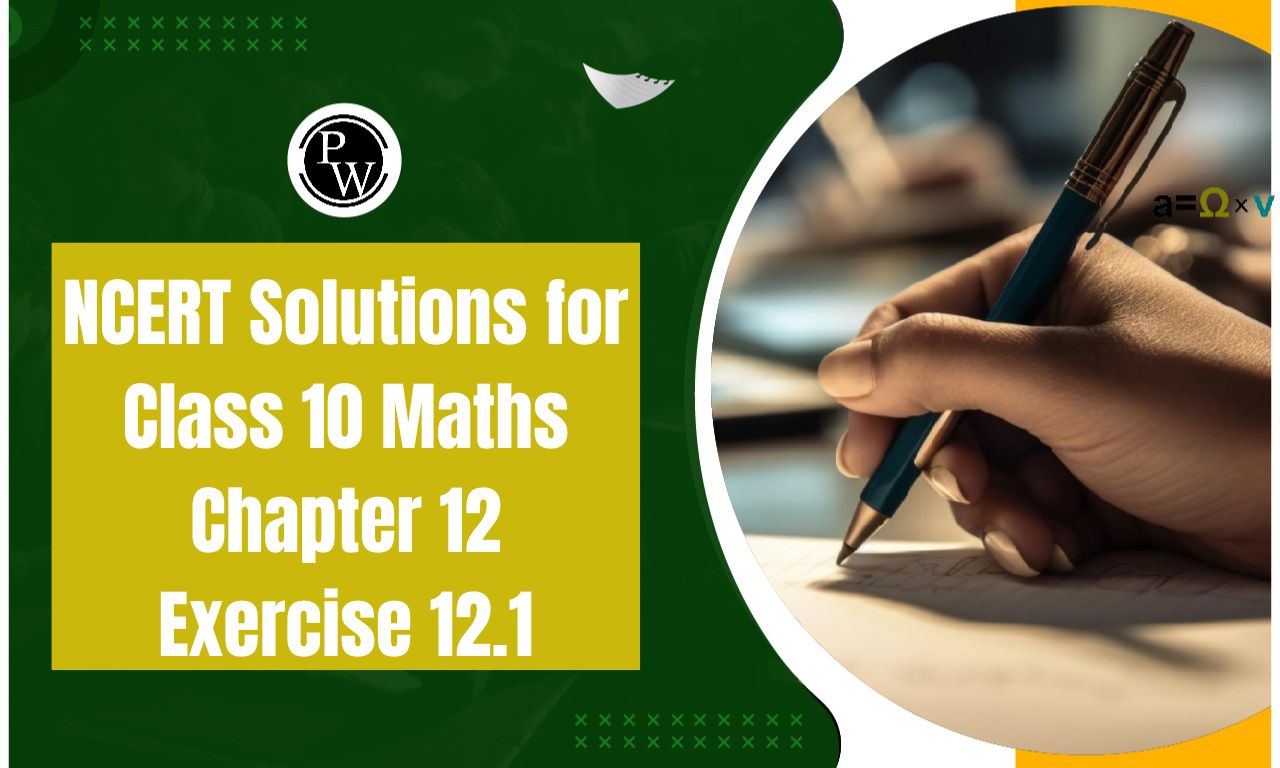
NCERT Solutions for Class 10 Maths Chapter 12 Exercise 12.1: NCERT Solutions for Class 10 Maths Chapter 12, Exercise 12.1, focus on Surface Areas and Volumes of solid shapes like cones, cylinders, spheres, hemispheres, and combinations of these. This exercise helps students understand the application of formulas to calculate curved, lateral, and total surface areas and volumes of these shapes.
It emphasizes problem-solving skills by combining geometry with real-life applications. Step-by-step solutions are provided to simplify concepts and enhance clarity. This exercise is crucial for building a strong foundation for geometry-related problems, boosting confidence in solving CBSE board exam questions effectively.CBSE Class 10 Previous Year Question Papers
NCERT Solutions for Class 10 Maths Chapter 12 Exercise 12.1 Overview
NCERT Solutions for Class 10 Maths Chapter 12 Exercise 12.1 PDF
NCERT Solutions for Class 10 Maths Chapter 12, Exercise 12.1, focus on Surface Areas and Volumes , covering essential concepts like calculating the surface areas and volumes of cylinders, cones, spheres, and combinations of these shapes. These solutions are designed to simplify complex problems, helping students grasp the concepts effectively and perform well in exams. Below, we have provided a free PDF of the solutions, offering step-by-step explanations to ensure clarity and accuracy. Download now to enhance your preparation!NCERT Solutions for Class 10 Maths Chapter 12 Exercise 12.1 PDF
NCERT Solutions for Class 10 Maths Chapter 12 Exercise 12.1 Surface Areas and Volumes
Below is the NCERT Solutions for Class 10 Maths Chapter 12 Exercise 12.1 Surface Areas and Volumes -1. 2 cubes each of volume 64 cm 3 are joined end to end. Find the surface area of the resulting cuboid.
Answer :
The diagram is given as: Given,
The Volume (V) of each cube is = 64 cm
3
This implies that a
3
= 64 cm
3
∴ a = 4 cm
Now, the side of the cube = a = 4 cm
Also, the length and breadth of the resulting cuboid will be 4 cm each, while its height will be 8 cm.
So, the surface area of the cuboid = 2(lb+bh+lh)
= 2(8×4+4×4+4×8) cm
2
= 2(32+16+32) cm
2
= (2×80) cm
2
= 160 cm
2
Given,
The Volume (V) of each cube is = 64 cm
3
This implies that a
3
= 64 cm
3
∴ a = 4 cm
Now, the side of the cube = a = 4 cm
Also, the length and breadth of the resulting cuboid will be 4 cm each, while its height will be 8 cm.
So, the surface area of the cuboid = 2(lb+bh+lh)
= 2(8×4+4×4+4×8) cm
2
= 2(32+16+32) cm
2
= (2×80) cm
2
= 160 cm
2
2. A vessel is in the form of a hollow hemisphere mounted by a hollow cylinder. The diameter of the hemisphere is 14 cm, and the total height of the vessel is 13 cm. Find the inner surface area of the vessel.
Answer:
The diagram is as follows: Now, the given parameters are:
The diameter of the hemisphere = D = 14 cm
The radius of the hemisphere = r = 7 cm
Also, the height of the cylinder = h = (13-7) = 6 cm
And the radius of the hollow hemisphere = 7 cm
Now, the inner surface area of the vessel = CSA of the cylindrical part + CSA of the hemispherical part
(2πrh+2πr
2
) cm
2
= 2πr(h+r) cm
2
2×(22/7)×7(6+7) cm
2
= 572 cm
2
Now, the given parameters are:
The diameter of the hemisphere = D = 14 cm
The radius of the hemisphere = r = 7 cm
Also, the height of the cylinder = h = (13-7) = 6 cm
And the radius of the hollow hemisphere = 7 cm
Now, the inner surface area of the vessel = CSA of the cylindrical part + CSA of the hemispherical part
(2πrh+2πr
2
) cm
2
= 2πr(h+r) cm
2
2×(22/7)×7(6+7) cm
2
= 572 cm
2
3. A toy is in the form of a cone of radius 3.5 cm mounted on a hemisphere of the same radius. The total height of the toy is 15.5 cm. Find the total surface area of the toy.
Answer:
The diagram is as follows: Given that the radius of the cone and the hemisphere (r) = 3.5 cm or 7/2 cm
The total height of the toy is given as 15.5 cm.
So, the height of the cone (h) = 15.5-3.5 = 12 cm
Given that the radius of the cone and the hemisphere (r) = 3.5 cm or 7/2 cm
The total height of the toy is given as 15.5 cm.
So, the height of the cone (h) = 15.5-3.5 = 12 cm
 ∴ The curved surface area of the cone = πrl
(22/7)×(7/2)×(25/2) = 275/2 cm
2
Also, the curved surface area of the hemisphere = 2πr
2
2×(22/7)×(7/2)
2
= 77 cm
2
Now, the Total surface area of the toy = CSA of the cone + CSA of the hemisphere
= (275/2)+77 cm
2
= (275+154)/2 cm
2
= 429/2 cm
2
= 214.5cm
2
So, the total surface area (TSA) of the toy is 214.5cm
2
∴ The curved surface area of the cone = πrl
(22/7)×(7/2)×(25/2) = 275/2 cm
2
Also, the curved surface area of the hemisphere = 2πr
2
2×(22/7)×(7/2)
2
= 77 cm
2
Now, the Total surface area of the toy = CSA of the cone + CSA of the hemisphere
= (275/2)+77 cm
2
= (275+154)/2 cm
2
= 429/2 cm
2
= 214.5cm
2
So, the total surface area (TSA) of the toy is 214.5cm
2
4. A cubical block of side 7 cm is surmounted by a hemisphere. What is the greatest diameter the hemisphere can have? Find the surface area of the solid.
Answer:
It is given that each side of the cube is 7 cm. So, the radius will be 7/2 cm.

5. A hemispherical depression is cut out from one face of a cubical wooden block such that the diameter l of the hemisphere is equal to the edge of the cube. Determine the surface area of the remaining solid.
Answer:
The diagram is as follows:

6. A medicine capsule is in the shape of a cylinder with two hemispheres stuck to each of its ends. The length of the entire capsule is 14 mm, and the diameter of the capsule is 5 mm. Find its surface area.

Answer:
Two hemispheres and one cylinder are shown in the figure given below. Here, the diameter of the capsule = 5 mm
∴ Radius = 5/2 = 2.5 mm
Now, the length of the capsule = 14 mm
So, the length of the cylinder = 14-(2.5+2.5) = 9 mm
∴ The surface area of a hemisphere = 2πr
2
= 2×(22/7)×2.5×2.5
= 275/7 mm
2
Now, the surface area of the cylinder = 2πrh
= 2×(22/7)×2.5×9
(22/7)×45 = 990/7 mm
2
Thus, the required surface area of the medicine capsule will be
= 2×surface area of hemisphere + surface area of the cylinder
= (2×275/7) × 990/7
= (550/7) + (990/7) = 1540/7 = 220 mm
2
Here, the diameter of the capsule = 5 mm
∴ Radius = 5/2 = 2.5 mm
Now, the length of the capsule = 14 mm
So, the length of the cylinder = 14-(2.5+2.5) = 9 mm
∴ The surface area of a hemisphere = 2πr
2
= 2×(22/7)×2.5×2.5
= 275/7 mm
2
Now, the surface area of the cylinder = 2πrh
= 2×(22/7)×2.5×9
(22/7)×45 = 990/7 mm
2
Thus, the required surface area of the medicine capsule will be
= 2×surface area of hemisphere + surface area of the cylinder
= (2×275/7) × 990/7
= (550/7) + (990/7) = 1540/7 = 220 mm
2
7. A tent is in the shape of a cylinder surmounted by a conical top. If the height and diameter of the cylindrical part are 2.1 m and 4 m, respectively, and the slant height of the top is 2.8 m, find the area of the canvas used for making the tent. Also, find the cost of the canvas of the tent at the rate of Rs 500 per m 2 . (Note that the base of the tent will not be covered with canvas.)
Answer:
It is known that a tent is a combination of a cylinder and a cone. From the question, we know that
Diameter = 4 m
The slant height of the cone (l) = 2.8 m
Radius of the cone (r) = Radius of cylinder = 4/2 = 2 m
Height of the cylinder (h) = 2.1 m
So, the required surface area of the tent = surface area of the cone + surface area of the cylinder
= πrl+2πrh
= πr(l+2h)
= (22/7)×2(2.8+2×2.1)
= (44/7)(2.8+4.2)
= (44/7)×7 = 44 m
2
∴ The cost of the canvas of the tent at the rate of ₹500 per m
2
will be
= Surface area × cost per m
2
44×500 = ₹22000
So, Rs. 22000 will be the total cost of the canvas.
From the question, we know that
Diameter = 4 m
The slant height of the cone (l) = 2.8 m
Radius of the cone (r) = Radius of cylinder = 4/2 = 2 m
Height of the cylinder (h) = 2.1 m
So, the required surface area of the tent = surface area of the cone + surface area of the cylinder
= πrl+2πrh
= πr(l+2h)
= (22/7)×2(2.8+2×2.1)
= (44/7)(2.8+4.2)
= (44/7)×7 = 44 m
2
∴ The cost of the canvas of the tent at the rate of ₹500 per m
2
will be
= Surface area × cost per m
2
44×500 = ₹22000
So, Rs. 22000 will be the total cost of the canvas.
8. From a solid cylinder whose height is 2.4 cm and diameter is 1.4 cm, a conical cavity of the
same height and same diameter is hollowed out. Find the total surface area of the
remaining solid to the nearest cm 2 .
Answer:
The diagram for the question is as follows: From the question, we know the following:
The diameter of the cylinder = diameter of conical cavity = 1.4 cm
So, the radius of the cylinder = radius of the conical cavity = 1.4/2 = 0.7
Also, the height of the cylinder = height of the conical cavity = 2.4 cm
From the question, we know the following:
The diameter of the cylinder = diameter of conical cavity = 1.4 cm
So, the radius of the cylinder = radius of the conical cavity = 1.4/2 = 0.7
Also, the height of the cylinder = height of the conical cavity = 2.4 cm
 Now, the TSA of the remaining solid = surface area of conical cavity + TSA of the cylinder
= πrl+(2πrh+πr
2
)
= πr(l+2h+r)
= (22/7)× 0.7(2.5+4.8+0.7)
= 2.2×8 = 17.6 cm
2
So, the total surface area of the remaining solid is 17.6 cm
2
Now, the TSA of the remaining solid = surface area of conical cavity + TSA of the cylinder
= πrl+(2πrh+πr
2
)
= πr(l+2h+r)
= (22/7)× 0.7(2.5+4.8+0.7)
= 2.2×8 = 17.6 cm
2
So, the total surface area of the remaining solid is 17.6 cm
2
Benefits of Using NCERT Solutions for Class 10 Maths Chapter 12 Exercise 12.1
Comprehensive Understanding : Provides detailed explanations of concepts like surface areas and volumes of geometric shapes, ensuring conceptual clarity.
Step-by-Step Solutions : Simplifies problem-solving with clear, structured approaches to complex questions.
Exam Preparedness : Helps students tackle CBSE exam questions confidently, adhering to the latest syllabus.
Real-Life Applications : Links geometry with practical uses, such as calculating capacities and designing objects.
Time Management : Enhances speed and accuracy in solving 3D geometry problems.
Accessible Format : Available in PDF format for convenient offline learning and revision.
NCERT Solutions for Class 10 Maths Chapter 12 Exercise 12.1 FAQs
How do you know when to use surface area and volume?
Why is it important to know volume and surface area?
What is the use of surface area and volume?
What unit represents surface area?

